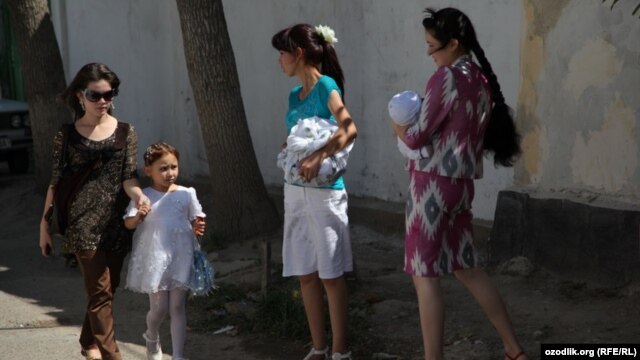Report: Forced sterilization of women widespread in Uzbekistan
| Publisher | Radio Free Europe/Radio Liberty |
| Publication Date | 13 December 2013 |
| Cite as | Radio Free Europe/Radio Liberty, Report: Forced sterilization of women widespread in Uzbekistan, 13 December 2013, available at: https://www.refworld.org/docid/52e659eb12.html [accessed 21 May 2023] |
| Disclaimer | This is not a UNHCR publication. UNHCR is not responsible for, nor does it necessarily endorse, its content. Any views expressed are solely those of the author or publisher and do not necessarily reflect those of UNHCR, the United Nations or its Member States. |
December 13, 2013
By RFE/RL
 The sterilizations – through removal of the uterus or cutting of the fallopian tubes – happen without the patient's knowledge and often is not learned of until much later, for example when the woman fails to get pregnant again.
The sterilizations – through removal of the uterus or cutting of the fallopian tubes – happen without the patient's knowledge and often is not learned of until much later, for example when the woman fails to get pregnant again.
A new report on forced sterilization of women in Uzbekistan at government clinics says the practice remains widespread across the country.
BBC Central Asia correspondent Natalia Antelava, the author of the report by the U.S.-based Open Society Foundations, says medical professionals throughout the country are under government pressure to perform sterilizations as a means to combat population growth.
Presenting the report to the press in Washington on December 13 and earlier this week in New York, she said all women of reproductive age who had delivered two or more children were potential targets for forced sterilization.
"The sterilization campaign by the government is still carrying on, it's happening everywhere, across Uzbekistan," Antelava told reporters on December 11 in New York. "So, it is not that individual regions are targeted, rather across the country clinics and hospitals are performing the procedures. It hasn't shown any sign of slowing down in the last five years."
She said that women with lower socioeconomic status and representatives of ethnic minorities were the most likely to be sterilized.
The sterilizations – through removal of the uterus or cutting of the fallopian tubes – happen without the patient's knowledge and often is not learned of until much later.
"The typical story is that the woman gives birth, then tries to get pregnant again, fails to get pregnant, then goes to a doctor and finds out that she has been sterilized," Antelava explained.
Antelava also said that local health administrators attempted to outperform one another in order to please the central authorities.
"It's very clear that there are certain quotas on the number of sterilizations that doctors perform but it is very difficult to trace these quotas up to Tashkent," she said.
"So, while the country is extremely centralized, there is also a real sense of competition between lower down the chain of command, between the local bureaucrats, local hospitals, and local doctors to outperform each other."
Since 1999, Uzbekistan's ongoing and systematic forced-sterilization program has affected tens of thousands of women, Antelava added.
Link to original story on RFE/RL website
